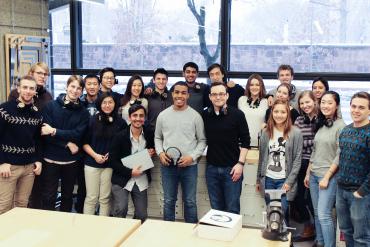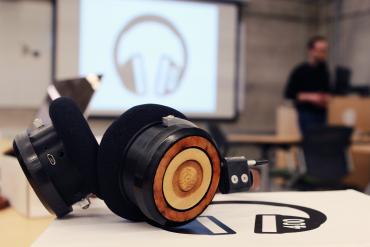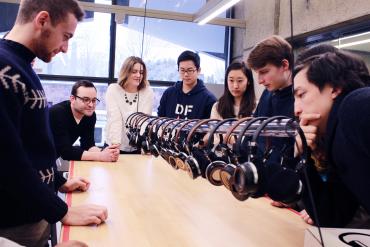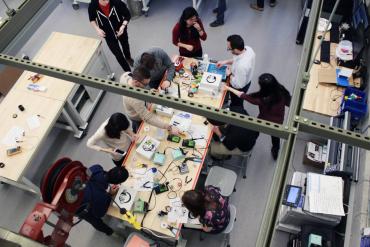Want A Custom Pair Of Headphones? ENAS 400 Students Are 'Making It'

When you take a course at the Center for Engineering Innovation and Design, you're pretty much guaranteed to come away with some newfound skills and an even
greater sense of the nuances of design. But a stylish pair of Bluetooth headphones of your own making? Well, now, this is something new.
 For their first assignment in the aptly named new course, Making It (ENAS 400), designed and built their own personal audio devices.
For their first assignment in the aptly named new course, Making It (ENAS 400), designed and built their own personal audio devices.
"It's intended to sit at the intersection of design technology and entrepreneurship," said Dr. Joe Zinter, assistant director of the CEID, who teaches the course.
"What I hope to do is have students gain an appreciation for the complexities that go into what might seem a relatively simple product, like a pair of headphones. Who makes it, what is it made out of, how much does it cost, how is it packaged?"
The course is designed to look at all aspects of launching a start-up – understanding the funding models, identifying your potential customer base, developing prototypes. All the students come up with an idea for a start-up company, and pitch it to the class. The students vote for the four best ideas and break off into teams, each one focused on one of those ideas.
 "The activities of each student are going to be extremely unique to that student," Zinter said. "Some students will focus on marketing opportunities and customers and some students will focus on prototyping, others on business model generation. But all students will be exposed to all aspects."
"The activities of each student are going to be extremely unique to that student," Zinter said. "Some students will focus on marketing opportunities and customers and some students will focus on prototyping, others on business model generation. But all students will be exposed to all aspects."
But to give the students an overview of the complexities of design, the course starts with the headphones project. Zinter and CEID staff developed a custom circuit board that the students soldered together. Koss Headphones donated the drivers, or speakers, to the course. The students then uploaded code to the boards, and built the headphones' enclosures.
"It's essentially so that the students can understand coding, electronics and the making of physical things out of metal wood and plastic," he said. "The technology that goes into building a Bluetooth headphone is very complicated, but I want them to recognize that it's not magic that makes these things work. What I really want them to understand from this exercise is that there's a tremendous amount that goes into something that looks like this."
And as headphones have emerged as a kind of fashion accessory themselves, the students fittingly put their own aesthetic touches to their creations. Student Doo Lee, for instance, outfitted the cans of his headphones with various designs, including a picture of artist Frida Kahlo. But how do they sound? "Awesome," he said.
(photos by Ngoc Doan)

